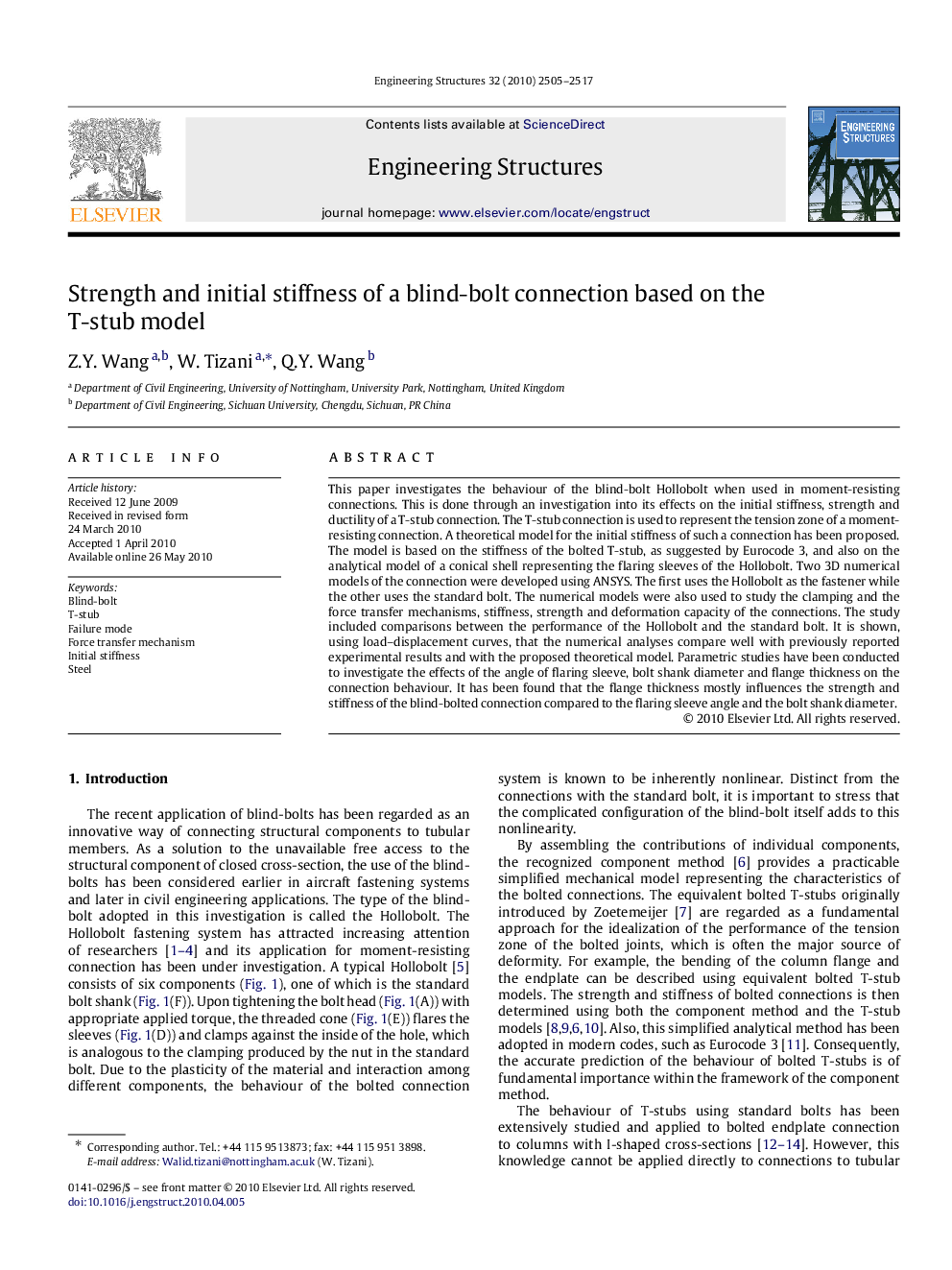| Article ID | Journal | Published Year | Pages | File Type |
|---|---|---|---|---|
| 268450 | Engineering Structures | 2010 | 13 Pages |
This paper investigates the behaviour of the blind-bolt Hollobolt when used in moment-resisting connections. This is done through an investigation into its effects on the initial stiffness, strength and ductility of a T-stub connection. The T-stub connection is used to represent the tension zone of a moment-resisting connection. A theoretical model for the initial stiffness of such a connection has been proposed. The model is based on the stiffness of the bolted T-stub, as suggested by Eurocode 3, and also on the analytical model of a conical shell representing the flaring sleeves of the Hollobolt. Two 3D numerical models of the connection were developed using ANSYS. The first uses the Hollobolt as the fastener while the other uses the standard bolt. The numerical models were also used to study the clamping and the force transfer mechanisms, stiffness, strength and deformation capacity of the connections. The study included comparisons between the performance of the Hollobolt and the standard bolt. It is shown, using load–displacement curves, that the numerical analyses compare well with previously reported experimental results and with the proposed theoretical model. Parametric studies have been conducted to investigate the effects of the angle of flaring sleeve, bolt shank diameter and flange thickness on the connection behaviour. It has been found that the flange thickness mostly influences the strength and stiffness of the blind-bolted connection compared to the flaring sleeve angle and the bolt shank diameter.
